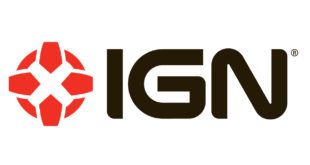As digital continues to evolve, IGN’s UK editor-in-chief Alex Simmons tells MCV about the importance of being present on various platforms to remain pertinent and broaden its audience
What are your thoughts on the state of the media industry?
Just as the evolution from print to online has been necessary for publishers and for some continues to be problematic, the digital proposition is itself evolving, and we’ll see more gaming websites struggle. This will be down to three drivers: firstly, diminishing overall ad inventory via ad blocking and ad viewability thresholds. Secondly, there’s the continuing growth of programmatic buying (automatic buying of an ad space, powered by algorithms) and more recently, data-only buying.
With client concerns around placements on occasionally-dubious sites being increasingly voiced in 2015, we will see an increase of automated buying on premium content gaming sites through 2016. Thirdly, distributing content to where gamers are in order to offer a better service to our partners. Gamers have their favoured platforms: media owners need to be on those platforms.
What challenges are you facing?
The rise of programmatic inventory and data buying means our sales teams are on a constant learning curve to ensure our agency and client partners best understand our capabilities. As we distribute IGN to multiple channels, a challenge is to ensure the experience on each of them is appropriate and interesting to the platform – we need to curate our content differently in each case.
People consume media on a growing number of platforms. How are you evolving your coverage?
Our goal is and always has been to be the expert voice of games wherever people are talking about them. We have worked hard to increase the ways people can view IGN content – on PlayStation, Amazon Fire TV, Apple TV, Snapchat Discover, Xbox, and more. But the way we approach content differs by platform, so what you see on IGN might be different from what’s on YouTube, or what you’ll find
on Facebook.
Increasingly, publishers are using services like Twitch to promote their games. Is that a concern? How are you staying relevant?
It’s not a concern. In fact, Twitch is an opportunity, because just like we’re on Apple TV, YouTube and Snapchat Discover, IGN has a big presence on Twitch. Also, we have a creative solutions department, which works with publishers to get our audience engaging with their products, not just on site but across multiple platforms, which gives us a tremendous amount of flexibility in our approach. For example, we can stream to Twitch in one portion of a campaign while hosting an offline event in another. Elsewhere, we often collaborate with other media owners – such as radio and cinema – to play on the strengths each party can bring to the table, so whatever makes most sense for the product, we can be a part of. We stay relevant by not limiting ourselves to one medium or one type of activity.
Last year you launched your IGN Premiere events. What was the thinking behind this?
We loved what Secret Cinema was doing in the film space and wanted to transport our audience into the game worlds they know and love, so the idea is to work with publishers to bring that interactive experience to life. But we also wanted IGN Premiere to reach beyond those in the room, which is why we put such as big focus on the livestream component, giving IGN’s broader audience a taste of the live event – while at the same time debuting brand new gameplay – from the comfort of their home.
The feedback we’ve had from both those who attended and the publishers we worked with has been incredible and we are committed to putting out more IGN Premiere events this year.
IGN is a global business. How does this change the way you work?
Having teams in countries across the world enables us to have fantastic relationships with publishers and developers on a local level, no matter where they are, which has opened up opportunities we simply wouldn’t have had if we only existed in the UK, US and Australia. But more importantly, it means IGN’s coverage resonates with a far larger audience, because it speaks to them and encourages conversation in their own language.
Has the way in which your global offices worked together changed at all?
IGN now has 27 editions in 21 languages across 110 countries, so the flow of communication between all offices has been key. It’s only been possible by having people dedicated to sharing content and information, so an article or video, no matter where it’s created, can appear on the homepage of any edition within minutes.

 MCV/DEVELOP News, events, research and jobs from the games industry
MCV/DEVELOP News, events, research and jobs from the games industry



